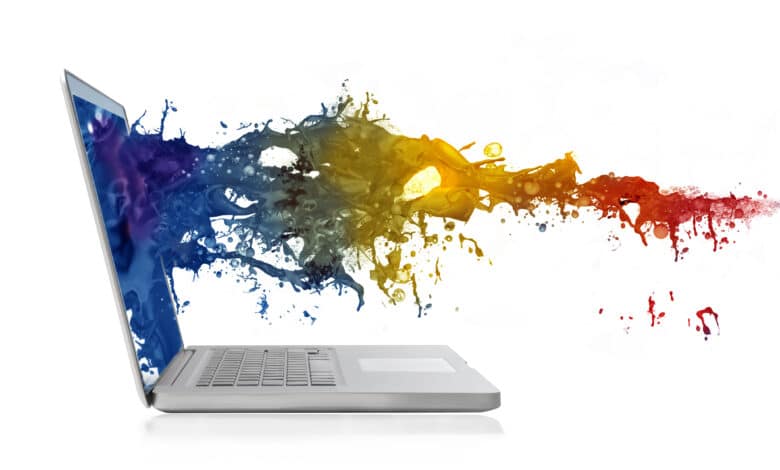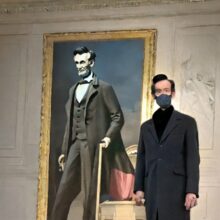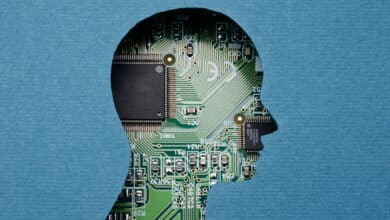
The platform Shutterstock, which offers stock photos, introduces an AI image generator. Interested parties can use it to have graphics produced automatically by entering keywords. Shutterstock is working with OpenAI to do this and talks of a revolution in the image market.
KI image generator creates graphics with just a few clicks
Until now, people who don’t want to spend a lot of money on imagery have had to rely on stock photo databases. These do offer comprehensive material for illustration; however, this material can also be found on many other websites and is not individualized. High-quality graphic design of websites is thus usually reserved for financially strong companies. The integration of an AI image generator in Shutterstock is now set to fundamentally change this circumstance. Paul Hennessy, CEO of Shutterstock, commented as follows: “Our user-friendly generative platform will change the way people tell their stories – you no longer need to be a design expert or have access to a creative team to create exceptional work.”
Shutterstock did not develop its own generator for this purpose. Instead, the company is working with OpenAI and will incorporate the already existing image generator Dall-E 2 into its service. This generator is known for being able to create high-quality graphics by entering simple commands. For instance, it is possible to customize not only the content displayed but also the style of the display to suit your own preferences. Well known are Dall-E-2 images in the style of Claude Monet or in photorealistic representation.
Art creators are paid
In order to be able to create images, the artificial intelligences have to be trained with already existing works. In this regard, there had been difficulties in the past. For example, quite a few images from Getty Images’ database were used for the AI image generator Stable Diffusion – without paying for the use of the works. Getty Images had sued the company behind Stable Diffusion as a result.
Shutterstock wants to go a different way here in cooperation with OpenAI. For example, Hennessy has announced that the artists whose works are included in the process of automatically generating images will be paid. Hennessy’s statement in this regard is clear: “Our tools are based on an ethical approach and on a library of assets that represents the diverse world we live in, and we ensure that the artists whose works have contributed to the development of these models are recognized and rewarded.”
The AI image generator will be incorporated into Shutterstock’s Creative Flow section. This is a collection of tools for editing – and now generating – images. With the other tools, it should also be possible to adjust the automatically generated graphics afterwards.
Ground problems of automatic image generation
However, in addition to the major advantage of broader access to usable imagery for media creators, some serious problems arise from the proliferation of AI image generators. In the public discussion, legal issues have been pointed out in this regard, for example: Who has the rights to automatically generated images? The example of the dispute between Getty Images and Stable Diffusion shows that this question is not easy to answer. In addition to the people who developed the generator’s software, for example, all those with whose works the generator was trained also have a stake in the automatically generated images. In addition, there are works involved in the creation of automatic images – for example, in the request to expand, alienate or recreate a particular known work.
In addition to legal issues, socio-political ones also arise. For example, image generators offer the possibility of creating photorealistic representations of fictional events. These in turn could be included in disinformation campaigns and contribute to the spread and plausibility of fake news. Similar problems arise here as with deep fakes.
Last but not least, there is the more theoretical question of the concept of art: what is and what can be considered art? This question, discussed in art theory as well as in metaphysics, is likely to be given another twist by the proliferation of AI image generators. In this case, it is clearly also connected with questions of the demarcation between man and machine, as they also arise in the case of the AI language program Lamda. This, in turn, is followed by numerous ethical questions.
The inclusion of such a generator in a popular platform such as Shutterstock is likely to give such issues greater public visibility. Such a development was already emerging in recent weeks and months. In addition to Lamda and Dall-E, ChatGPT has been the main focus of public attention.







No replies yet
Neue Antworten laden...
Gehört zum Inventar
Beteilige dich an der Diskussion in der Basic Tutorials Community →